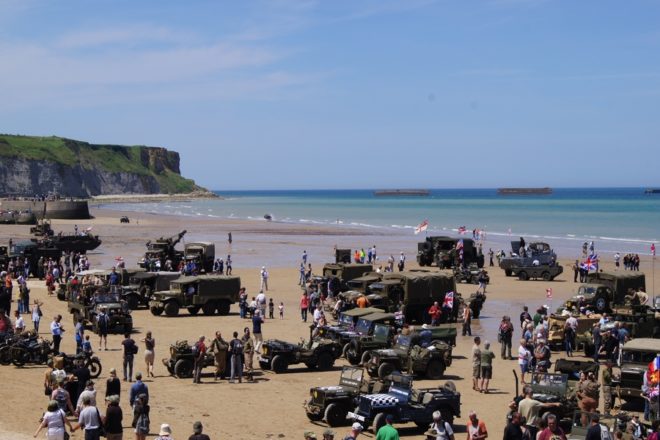
Share
Initially planned for 5 June, Operation Neptune, the biggest amphibian military operation of the Second World War, was delayed until the following day due to adverse weather conditions. Several assault phases had been planned for the initial stages of the soldiers’ landings on the beaches: a massive airborne operation and intensive bombing in order to neutralise the German defences.

A variety of ways to visit the D-Day beaches is on offer in the area of Bayeux and the surrounding Bessin area. Minibus excursions with a driver-guide are available from many hotels. A different perspective on the events of 6 June can be gained by flying over the beaches in a microlight or paraglider. You can also climb into one of the famous Willys MB jeeps for a ride along the chaotic roads of Liberty….
The Normandy coastline is home to the five historical D-Day beaches: Sword Beach and Gold Beach for the Franco-British sector, Juno Beach for the Canadians, and Omaha and Utah Beach for the Americans. Easily accessible from Bayeux, these sites and their memorials are key locations for visitors interested in the Battle of Normandy.
From the city of Bayeux, visitors can easily access the D-Day landing beaches and memorials, with stops at Arromanches, the American Cemetery at Omaha Beach, and Pointe du Hoc. A variety of accommodations, guided tours, and transport services are offered within the Bayeux and Bessin area in Normandy, providing support for planning an exploration of the D-Day beaches.